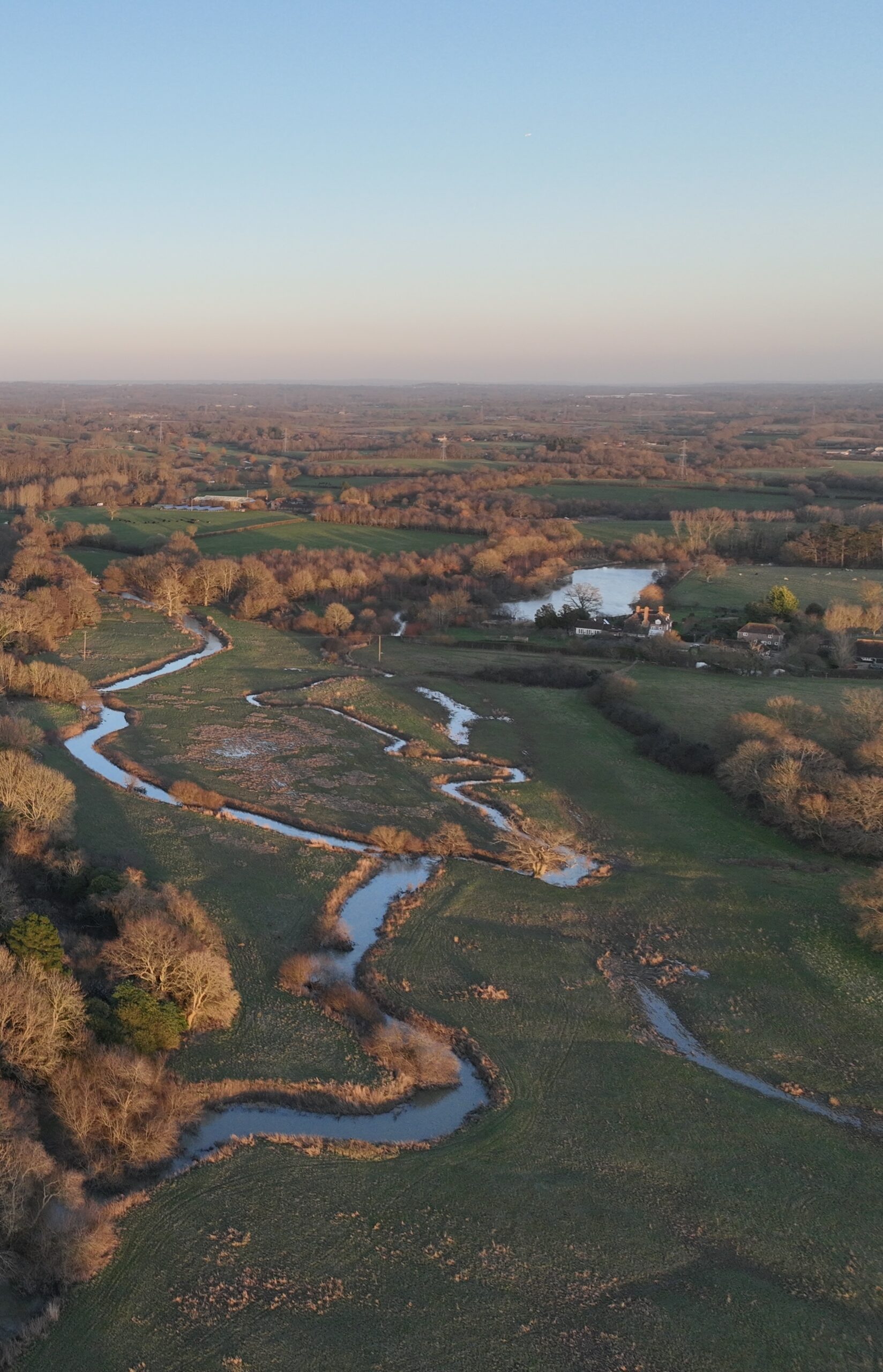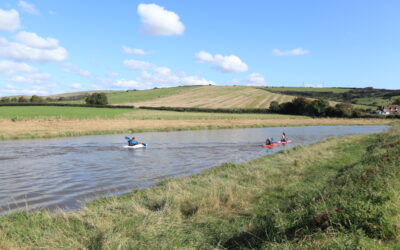Adur River Recovery

A Sussex-Born Blueprint for Nationwide Recovery
The Project
The Adur River Recovery project is a land manager-led initiative to restore one of the biggest rivers in West Sussex. As a national Landscape Recovery pilot project supported by Defra, we’re reconnecting vital nature recovery sites with the help of 27 farms & estates, conservation partners, and local councils.
The Problem
The River Adur is under threat—habitat loss, species decline, pollution, drought, and flooding are now widespread. Urban development and sea-level rise add further pressure. Without urgent action, these issues will worsen.
The Solution
Renaturalising channels & floodplains
Restoring the river and reconnecting it to its floodplain slows water, reducing both floods and droughts.
Reviving Wetlands & Wildlife
Creating wetlands and saltmarsh boosts biodiversity, captures carbon, and filters pollution.
Enhancing Landscapes
Planting trees, improving fish passage, and tackling invasive species restores balance to ecosystems.
Supporting Sustainable Farming
Nature-friendly farming practices improve soil health, protect water quality, and create a resilient countryside.




Diving into the Numbers
of River Channel
Leading Farms & Estates
of Riverside Habitat
Partners
of Nature Recovery
Strategic Location
Latest News
Relief for our Rivers? New Report Spells Change for the Water Sector
Tides might be about to change for the UK water sector as the Independent Water Commission (IWC) has released a landmark report directly challenging the status quo.
All Aboard The Adur! – the link between rivers and migratory species
Find out how the River Adur actss as a launch-pad, path, and destination for a multitude of migratory species.
River Restoration – why we should ‘go with the flow’
Functioning floodplains and wiggly streams may be our greatest weapon against flood damage and biodiversity loss.
Contact
Knepp Wildland Foundation
Knepp Castle Estate Office,
Horsham,
West Sussex,
RH13 8LJ




